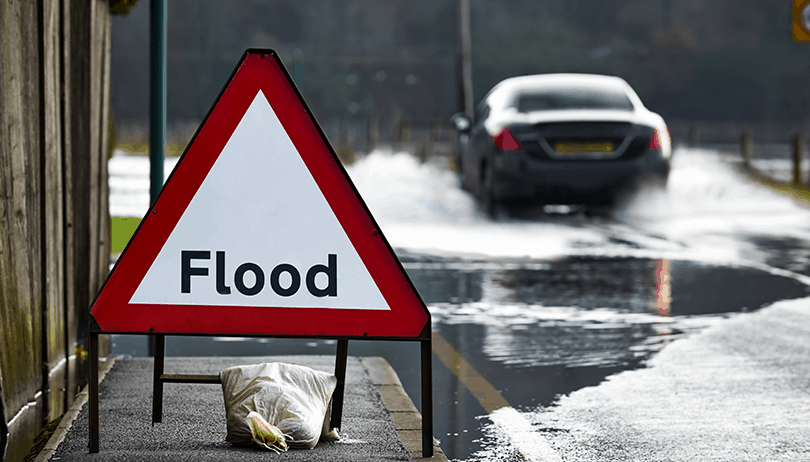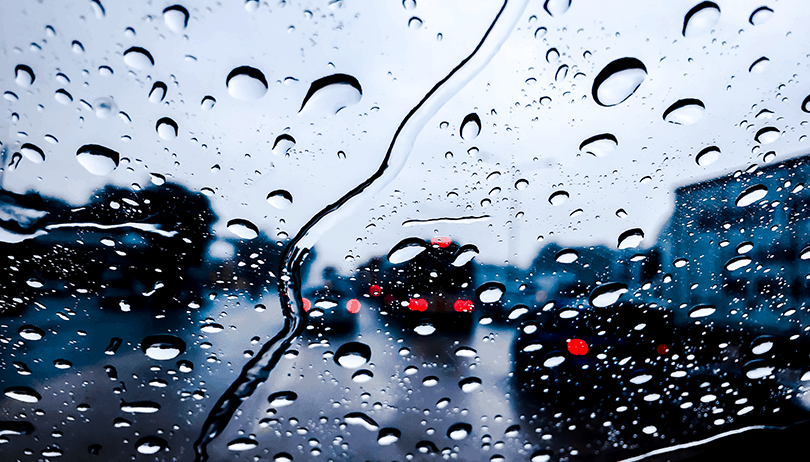Contents
When you’re a new driver, driving in heavy rain can be a traumatising experience. Often, the best way to calm your nerves is to prepare yourself beforehand, so you’ll have the knowledge and skills you need to succeed when the time comes.
For some the thought of driving in heavy rain fills them with dread, and they opt to take some refresher lessons at a driving school in Birmingham.
While you’re thinking about booking in a refresher lesson to calm your nerves, here are our 7 top tips for driving when it’s raining cats and dogs.
Before you leave
1. Is your journey essential?
Sounds obvious, but it’s a question drivers often overlook.
Assess the driving conditions and decide if the risks outweigh the benefits. The safest option may be to delay your journey until the rain stops.
2. Can your car safely transport you from A to B?
Petrol: Driving in heavy rain uses more fuel than normal driving conditions because you use your air conditioning to prevent the windows from steaming up. Is your tank sufficiently filled?
Wiper blades: Windscreens must be kept free from obstructions for vision. Heavy rain severely restricts your visibility, so clearing your windscreen will be incredibly important. Driving with damaged blades results in streaking, smears, and patches of poor visibility – stress you don’t need when your vision is already poor.
Tyres: Car tyres must be inflated to the manufacturer’s specifications (check your manual) and must have a minimum tread depth of 1.6mm. Driving in heavy rain reduces your tyres’ grip on the road. Your tyres’ inflation level and tread depth are what provide that grip. Driving when your vehicle doesn’t comply with the rules above is illegal and very dangerous in adverse weather conditions.
3. Make sure you pack supplies (just in case).
As the saying goes, it’s better safe than sorry. When driving in heavy rain, never leave the house without:
- A charged mobile phone: If you break down, you’ll need to phone for roadside assistance and let your family know you’re safe.
- A waterproof coat, a change of clothes and a blanket: If you break down and need to leave your car, you will probably get wet, and the only thing worse than being soaked through is being soaked and freezing cold.
- Food and water: If you have an accident, it may take time to recover your car safely.
4. Plan your route (and a backup).
Is your preferred route prone to flooding? If so, you may need an alternative.
Tune your radio to local stations because they often include traffic updates and road closures, which will save you time on your journey. And most importantly, remember to allow extra time for your journey.
On the road
Once you’ve completed all the above checks, you’re ready to set off on your journey.
5. Take it slowly.
Don’t risk your safety or other road users for the sake of speed. Visibility is poor when driving in heavy rain, so adjust your driving accordingly.
Increase the distance between you and other drivers: Poor visibility means it takes longer for drivers to spot and respond to hazards. Giving other road users space increases your ability to see hazards and plan your response.
When a road is very wet, it takes double the time and distance to stop. The two-second rule, applied in fair weather conditions, becomes the four-second rule. Avoid braking hard, as this increases the chance of skidding.
Aquaplaning: When a car loses its grip on the road because of surface water, steering, and braking can feel light and unresponsive. If this happens, don’t panic. Gently ease off the accelerator until you feel control returning.
Stop: Always consider pausing your journey if you need to. Pull over where it is safe to do so and continue once the weather conditions improve.
6. Be considerate of other road users.
It can be tempting to use full-beamed headlights and fog lights when driving in the rain. However, neither are advised as they dazzle other road users. Dipped headlights are sufficient to increase your visibility without blinding other drivers.
7. Standing water.
Always treat puddles, standing water, and floods with extreme caution. Never enter moving water, or drive into water deeper than 10cm. If you must go through standing water, slow down to around 5 miles per hour. Enter the water one car at a time and drive slowly along the highest point in the road. Don’t stop your car, or you may flood your exhaust – an expensive problem to repair.
Once you’re clear of the water, pump your brakes in short bursts to test and dry them thoroughly.

Conclusion
British weather can be unpredictable.
When you learn to drive with Brum Driving School, your driving skills won’t be. Get in touch to book some refresher lessons to ensure you feel comfortable driving in heavy rain.
